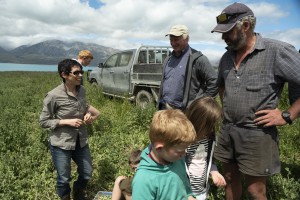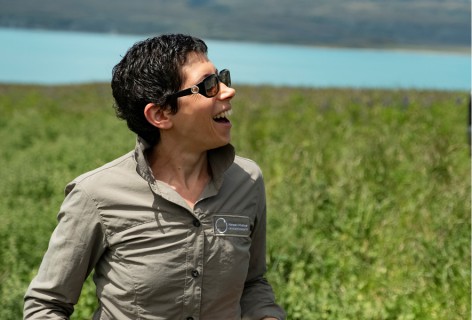Weeds of the Future: The Survey of Rural Decision Makers Provides a Glimpse
In 2019, we included a question about future weeds. The aim was to determine whether problematic agricultural weeds are flying under the radar. “We want to start scouting for low-hanging fruit – weeds that are not yet a big problem and for which biocontrol is potentially a viable solution,” said Ronny Groenteman, who is responsible for analysing the responses to the question about weeds. “Weeds that are not yet a big problem are not an economic burden for farmers, and the best chance to keep them in check could be through repeat or ‘piggy-back’ biocontrol programmes [i.e. using agents already released against the same target weeds in other parts of the world]. Piggy-back programmes are much cheaper when compared to starting a biocontrol programme from scratch,” she added.
Choosing the right question on weeds proved to be quite thorny. “We wanted to give respondents the option to highlight weeds that we haven’t thought about,” said survey director, Pike Stahlmann-Brown. In the end, the question was simple: “Please list up to three species of weeds on your farm that never required management previously, but that you expect will require management within the next 5 years.”
The results were both telling and surprising. We received 2,135 responses to the question, and roughly 290 weed species or weed groups (e.g. ‘thistles’, ‘grasses’) got at least one mention. Nearly 470 respondents said they could not easily come up with weeds they thought would become a problem in the future, or that ‘the same old weeds’ that are an ongoing problem will continue to be their key problematic weeds. Most weeds were mentioned only a handful of times (one to five mentions).
However, gorse (Ulex europeaus), thistles (Carduus spp. and Circium arvense), and blackberry (Rubus fruticosus) were mentioned over 200 times each by respondents from Northland at the tip of the North Island to Southland in the south of the South Island. “This was a surprise to us,” said Ronny. “These weeds are not new. Are they becoming a problem in areas where they have not been of great concern before, or did some respondents focus on current problematic weeds rather than weeds of the future?” she questioned. Evidence of the former could be found in some of the responses, such as, “Thistles suddenly appearing … out of nowhere!!”, and “in last few years I only had a small amount of gorse in one of my paddocks, that has increased considerably over the last year.” However, other scenarios, such as respondents focusing on current weeds, must still be considered when interpreting the results.
Ronny and the team were particularly interested in evidence of weeds that are either expanding into new regions, such as yellow bristle grass (Setaria pumilia), or that are new weeds on the block, such as carrot weed (Oenanthe pimpinelloides) and burdock (Arctium minus, A. lappa).
Yellow bristle grass featured in 33% and 26% of Taranaki’s and Waikato’s responses, respectively, while less than 3% of respondents from Northland, Auckland, Hawke’s Bay, Manawatū–Wanganui, and Canterbury mentioned this weed. The 2019 survey results suggest that carrot weed is of increasing concern in Northland (12%) and Auckland (8%), but is currently only an emerging concern for respondents further south in Waikato (1%), Bay of Plenty (1.5%), Marlborough (2%), and Canterbury (0.3%). “This suggests we should watch out for its spread,” said Ronny. “Burdock was mentioned in only two regions – Canterbury by 2% and Otago by 4% of respondents – which could be indicative that it is just starting to rear its ugly head,” she added.
These are just a few examples of the many weeds we should keep a watchful eye on in future surveys, while actively looking for ‘piggy-back’ biocontrol options in the interim. The question about weeds will be repeated in future surveys, but for now, three old, notoriously weedy invaders are still high on the minds of rural decision makers when considering the weeds that are likely to make them lose sleep in the coming years.
Percentage of respondents in each region who reported (from left) burdock, carrot weed, gorse, and yellow bristle grass as a future concern.
The 2021 Survey of Rural Decision Makers will be out in June and will remain open for 3 months.
This project is funded by the Ministry for Primary Industries. The weed question in the Rural Decision Makers Survey was funded by the Ministry of Business, Innovation and Employment as part of Manaaki Whenua – Landcare Research’s Beating Weeds programme.






